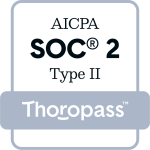In recent years, healthcare systems across the globe have been dealing with rising costs and economic pressures. One of the measures many organizations have adopted to mitigate these financial challenges is the reduction of administrative staff. While layoffs can help cut costs, they also pose significant challenges in maintaining operational efficiency. The solution to bridging this gap lies in technology, particularly in digital engagement solutions that automate many of the manual tasks traditionally performed by administrative staff.
The Financial Pressures on Healthcare Systems
Healthcare systems are under immense pressure to manage costs while continuing to provide high-quality care. Several factors contribute to this financial strain, including:
- Rising operational costs: Salaries, benefits, and other overhead expenses are continually increasing.
- Regulatory compliance: Adhering to complex and evolving regulations requires significant administrative effort.
- Technological investments: Implementing and maintaining cutting-edge medical technology is expensive.
- Patient expectations: Modern patients demand quick, efficient, and personalized care, which requires additional resources.
In response to these challenges, many healthcare organizations are resorting to administrative layoffs. However, this creates a new set of problems: without sufficient administrative support, tasks such as scheduling, billing, patient communication, and data management can suffer, leading to inefficiencies and potential declines in patient satisfaction.
The Role of Digital Engagement Solutions
The integration of digital engagement solutions offers a promising avenue to address the workforce gap created by administrative layoffs. These technologies can automate a variety of tasks, improving efficiency and enhancing patient experience. Here are some key areas where digital solutions are making a significant impact:
1. Appointment Scheduling and Reminders
Automated scheduling systems can manage appointment bookings, cancellations, and reminders without human intervention. Patients can book appointments through online portals or mobile apps, which then update the healthcare provider’s schedule in real-time. Automated reminders via SMS or email reduce no-show rates, ensuring better utilization of resources.
2. Billing and Payment Processing
Digital billing systems streamline the invoicing process, reducing errors and ensuring timely payments. Automated systems can generate and send invoices, process payments, and follow up on outstanding balances. This not only reduces the administrative burden but also improves cash flow for healthcare providers.
3. Patient Communication
Effective communication is crucial in healthcare. Digital engagement platforms enable seamless communication between patients and providers through secure messaging, telehealth consultations, and automated notifications. These platforms ensure that patients receive timely updates and have easy access to their healthcare providers, enhancing the overall patient experience.
4. Data Management and Analytics
Administrative staff often spend a significant amount of time on data entry and management. Digital solutions can automate these processes, ensuring data accuracy and freeing up staff to focus on more critical tasks. Advanced analytics can also provide insights into patient trends, resource utilization, and other key metrics, enabling healthcare providers to make informed decisions.
5. Patient Portals
Patient portals empower individuals to take control of their healthcare. These portals provide access to medical records, test results, appointment scheduling, and communication with healthcare providers. By giving patients the tools to manage their own care, healthcare systems can reduce the administrative workload and improve patient satisfaction.
The Benefits of Digital Transformation
The shift towards digital engagement solutions in healthcare offers numerous benefits:
- Cost Savings: Automation reduces the need for a large administrative workforce, leading to significant cost savings.
- Efficiency: Automated systems handle repetitive tasks quickly and accurately, improving overall efficiency.
- Patient Satisfaction: Digital tools provide a more convenient and responsive patient experience.
Conclusion
As healthcare systems navigate the complexities of reducing costs while maintaining high standards of care, digital engagement solutions offer a viable path forward. By automating administrative tasks, these technologies can mitigate the impact of workforce reductions, improve operational efficiency, and enhance patient satisfaction. The future of healthcare lies in embracing digital transformation, ensuring that providers can deliver better care with fewer resources.






